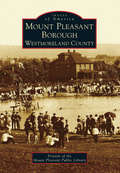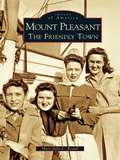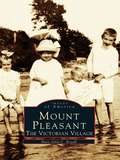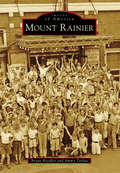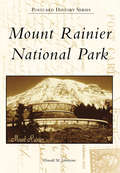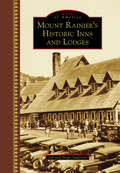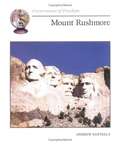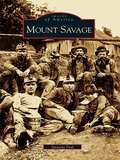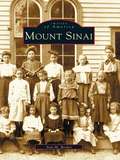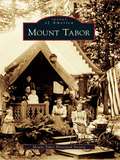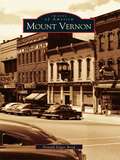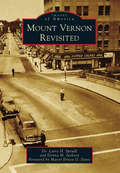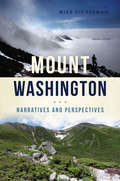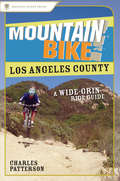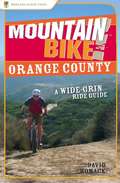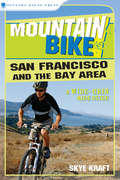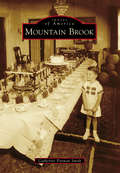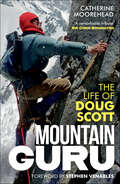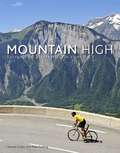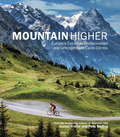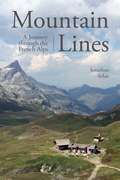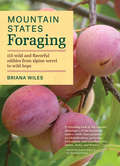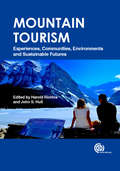- Table View
- List View
Mount Pleasant Borough, Westmoreland County
by Friends of the Mount Pleasant Public LibraryMount Pleasant is a small borough in the Laurel Highlands of Westmoreland County with an immeasurable history. Originally a Native American trail, Main Street was used by Gen. Edward Braddock in 1755 on his journey to his 16th encampment. Generations have lived here since the town was incorporated in 1828. Many immigrants from Poland, Italy, Germany, and Ireland came here to work in the coal, coke, and glass industries, which were growing quickly and spurring successful businesses. The coke works of Henry Clay Frick was established in 1881. Bryce Brothers Glass began in 1896 and became well known for blown stemware and tableware. L.E. Smith Glass Company manufactured handmade American pressed glass in various colors and styles beginning in 1907. The success of these industries led to the Glass Festival, held annually in September. Today, in the center of town is Diamond Memorial Square, the quintessential symbol of Mount Pleasant, where the World War I doughboy was erected in 1924. Mount Pleasant Borough, Westmoreland County shares photographs and stories that illustrate the strong community ties of the area.
Mount Pleasant: The Friendly Town (Images of America)
by Mary-Julia C. RoyallLocated along the shores of the Charleston harbor, Mount Pleasant is a graceful, enchanting community known for its exquisite views of the water and landscape. Once comprised of five small hamlets, the area has seen phenomenal increases in both business and population, a growth that was correctly predicted when the John P. Grace Memorial Bridge linked the town with Charleston in 1929. It is a place where small-town charm lingers, even among the fast-paced life in which most residents now take part. Mount Pleasant: The Friendly Town begins the community's story where Mount Pleasant: The Victorian Village left off, and it bridges the 1930s with modern times. This compelling history illustrates the ways in which Mount Pleasant coped with the happenings of the 20th century, including such far-reaching events as World War II and the recovery following the Great Depression, and those much more intimate such as the devastation of Hurricane Hugo and the sesquicentennial celebration of the town. Readers will experience this unique area of South Carolina through the eyes of the residents who lived here during the town's coming of age.
Mount Pleasant: The Victorian Village (Images of America)
by Mary-Julia C. RoyallMount Pleasant: The Victorian Village is an intimate look at like in the area of the town now known as the historic district, during the slower-paced time before World War II. Called "The Village" by its citizens, this close-knit community along the edge of Charleston harbor was formed when five small English settlements merged in the nineteenth century to create the town of Mount Pleasant. The small town had its own identity and remained a "Victorian Village" due to its isolation from the outside world except by ferry. Rapid growth and change began with the opening in 1929 of the Grace Memorial Bridge over the Cooper River. The bridge linked cities to the north and south via Highway 40 (now 17), thus opening the door for tourism and commerce while creating local accessibility to Charleston.
Mount Rainier (Images of America)
by Jimmy Tarlau Bryan KnedlerMount Rainier began its history as an incorporated town in 1910 with the merging of several subdivisions that straddled Bunker Hill Road, a major route between the ports of Georgetown and Bladensburg. Before the Civil War, Thomas and Anna Clemson owned a 100-acre farm fronting that important road. Their family letters provide some of the earliest writings about the area. In 1891, Elizabeth and Estcourt Sawyer purchased the Clemson farm and named their subdivision Mount Rainier. In 1899, the real estate became especially attractive to commuters when the District of Columbia's streetcar system was extended through the heart of the present-day city; the route, now known as Rhode Island Avenue, later became part of US Route 1.
Mount Rainier National Park (Postcard History)
by Donald M. JohnstoneMount Rainier rises 14,410 feet above sea level and can be seen on any given day by over three million people and from over 100 miles away. It is America's fifth national park, established in 1899. The mountain is an active but currently dormant volcano. With 25 named glaciers, 50 smaller unnamed glaciers, and numerous perennial snowfields, Mount Rainier boasts the largest glacier system in the continental United States. In addition to the glacier zone, the park has alpine and subalpine forest and subtropical rain forest. Each zone has its own unique ecology of plants and animals. The vistas of and from the mountain are some of the most spectacular in all of the park system.
Mount Rainier's Historic Inns and Lodges (Images of America)
by Jeff Sonja AndersonPresiding over the Puget Sound region, Mount Rainier has lured adventurers and entrepreneurs to its slopes since the earliest settlers. Visitors rode packhorses or hiked miles to tent “hotels” at Theosophy Ridge, Indian Henry’s Hunting Ground, and Ohanapecosh. James Longmire opened Longmire Springs Hotel near bubbling mineral springs. In 1899, Mount Rainier became a national park, and eventually, a motley array of services was consolidated by the Rainier National Park Company, which built National Park Inn and Paradise Inn. Roads, services, and activities expanded, and guests poured in. Winter activities, such as skiing and tobogganing, increased the park’s popularity. The 1936 Winter Olympic Ski Trials and training for World War II ski troops were even hosted there. Visitors today might be surprised to know that many inns, rental cabins, bathhouses, and other buildings have come and gone, leaving some areas more pristine now than for much of the park’s history.
Mount Rushmore (Cornerstones of Freedom)
by Andrew SantellaRelates how the Mount Rushmore National Memorial, known as "The Shrine of Democracy," was conceived, designed, and created.
Mount Savage
by Amanda PaulThe town of Mount Savage, Maryland, is a small blue-collar town nestled at the base of Big Savage Mountain in the Allegheny Mountains, between Frostburg and Cumberland. The town began as a small farming settlement in the mid-1800s, but it was not until 1844 that the region was put on the nation's map with the pressing of the first iron rail in the United States. After this claim to fame, Mount Savage became the fifth largest city in Maryland. Named as the headquarters for the short line railroad and the Cumberland & Pennsylvania Railroad, the area was deemed an industrial center. In addition to the rail businesses, Mount Savage attracted a foundry, two brick refractories, and several local merchants. In this company town, the industries shaped the economy and topography of Mount Savage, building housing for workers and donating land for schools, churches, and other public buildings. The town was a cultural melting pot attracting English businessmen and Irish, Scottish, Welsh, Italian, and German workers. With this diverse mix of cultures, the identity of Mount Savage was molded into a close knit community. Despite the loss of the industries to the region, Mount Savage continues to celebrate its hard-working traditions. The photographs contained in Images of America: Mount Savage offer a fascinating look into the irreplaceable memories of the people and places that have made Mount Savage what it was, is, and will become.
Mount Sinai (Images of America)
by Ann M. BeckerTucked alongside a harbor on Long Island's north shore, Mount Sinai has long attracted residents and visitors. It was the site of an early European settlement in 1664 and the embarkation point of the Revolutionary War foray into enemy territory by Maj. Benjamin Tallmadge, a member of Gen. George Washington's Setauket spy ring. Mount Sinai was a farming and seafaring community in the 1600s, 1700s, and 1800s. In 1891, it became the site of the "sanitary resort" known as the Crystal Brook Park Association. Later, it drew an early community of artists and photographers who captured the natural beauty of the area. Mount Sinai portrays these and many other events of historical and cultural interest.
Mount St. Helens
by David A. AndersonThe story of Mount St. Helens is that of an active volcano and human interaction with it. The mountain is culturally important to the regional native people. Its Cowlitz name, Lawetlat'la, means "Person From Whom Smoke Comes." Early European settlers saw opportunities to make a living from the natural resources, and people fell in love with the forested valleys and slopes of the glacier-clad peak with the blue lake at its foot. Forgotten were the eruptions of the 19th century and the fact that the landscape was a product of frequent violent explosions. A report from the 1970s reminded locals that Mount St. Helens is an active volcano and could erupt again before the end of the 20th century. Only a few people at that time were aware of what the mountain was capable of, and many were surprised at the events that took place in 1980.
Mount Tabor
by Mount Tabor Historical SocietyOne of New Jersey's earliest permanent Methodist camp meeting grounds, Mount Tabor embodied the austere evangelical fervor of 1869. Canvas tents on 16-by-25-foot leased lots surrounded Trinity Park, the focal point of all religious and social activity for 10 days in late August. The camp meetings were hugely successful, and the growing community needed more permanent housing. Narrow, two-story Victorian cottages with intricate porches and balconies began to sprout on the lots. In 1885, the octagonal-shaped tabernacle, with its soaring walls and heaven-high ceiling, was built. As early as 1891, the religious summer colony expanded its recreational activities,and by 1912, Mount Tabor was more of a summer resort than religious retreat. After World War II, most of the 350 cottages were converted to year-round use, and Mount Tabor became a community within Parsippany, welcoming people from all religions and backgrounds. Today the unpretentious charm of its humble beginnings permeates the quaint community, and modern residents, like their forebears, are drawn to the rich, spiritual heritage of goodwill and the delightful cottages that invite fellowship.
Mount Vernon
by Donald Edgar BoydIn 1805, veterans of the American Revolution claimed a plot of land in Ohio as reward for their military service, settling the town of Mount Vernon. In honor of President George Washington, the town was named after his colonial farm, and Mount Vernon remained true to its image, earning it the nickname of "Ohio's Colonial City." The town takes pride in its many original, well-preserved grand historic homes and mansions. An architectural gem and America's oldest, authentic 19th-century theater, the Woodward Theater is currently being renovated and 200 years later, today's vehicles still rumble over the Colonial City's original brick streets.
Mount Vernon Revisited (Images of America)
by Donna M. Jackson Mayor Ernest Davis Dr Larry SpruillAn important gateway suburban community, Mount Vernon was formed around the construction of two commuter rail lines to and from New York City. In the first quarter of the 20th century, its contiguous borders with Greater New York, rapid population growth, automobiles, petroleum, and industrial development set the stage for the encroachment of urban realities on the upwardly mobile founders' hopes for a sustained and prosperous suburban lifestyle. Through images that illustrate the power of 20th-century transportation technologies, new energy sources, and dynamic demographic forces on this "City of Happy Homes," Mount Vernon Revisited commemorates pivotal milestones of the past 150 years while offering indicators of the city's potential and identity.
Mount Washington: Narratives and Perspectives
by Mike DickermanFor two centuries, Mount Washington has been the object of countless writers� wonder and fascination. In this volume, more than twenty previously written pieces inspired by New England�s highest peak have been carefully selected, and collectively these cover nearly every aspect of the mountain�s storied past. Tag along on early explorations of the White Mountains and its fabled Presidential Range. Follow the history of the nation�s first mountain-climbing train and witness many of Mount Washington�s tales of human tragedies. Editor and area historian Mike Dickerman explores the captivating history of one of the Granite State�s most remarkable places.
Mountain Bike! Los Angeles County
by Charles PattersonMountain Bike! Los Angeles County is must-have literature for the cyclist who is eager to explore the wonderful terrain that housed the genesis of mountain biking in the late seventies. In this trail guide you'll find detailed maps of carefully planned routes, some popular and some unknown to many, as well as comprehensive descriptions of what hazards and delights you'll encounter along the way. Whether you're a adrenalin seeking downhill bomber, or a gram-counting cross country racer, the Wide Grin guide will be your bible. Los Angeles County has every conceivable type of mountain bike accessible terrain, from remote, loamy oak forest floor singletracks without a person in sight, to roller coaster, rock-garden filled chutes that will give you plenty of thrills. Several easier routes for novice riders are also included.Over the years, mountain biking has become a multi-faceted sport, encompassing several disciplines that all utilize the 26-inch knobby tire. The masochistic single-speeder, the cross country racer, the dirt-jumping purist, the downhill racer, the freerider, the epic rider and the weekend warrior will all find their needs catered to in this guide. Each route is rated on technical and aerobic difficulty, so no rider will get more than they bargained for. Additionally, GPS waypoints for the start of each route are given in both UTM and latitude/longitude coordinates, so you'll never find yourself lost.Los Angeles County has enough riding terrain to keep your riding experiences new, fresh, and challenging for a lifetime. Even veteran Angelinos will find themselves surprised at the number of great loops and shuttle-runs unbeknownst to them until now. After a broad tour of LA's mountain bike playgrounds, you'll surely cancel your plans to relocate to Vancouver's North Shore or to the city of Moab, Utah, because Socal truly is the Mecca of mountain biking, and Los Angeles is right in the center of it.
Mountain Bike! Orange County
by David WomackMountain Bike! Orange County covers the gamut of mountain biking behind the Orange Curtain. From the majestic peaks of the Santa Ana Mountains to the rolling grasslands of Chino Hills State Park, there's something for everyone here. Rip extreme drops in Laguna Canyon, explore the vast reaches of the Cleveland National Forest, and race down suburban singletrack on the Fullerton Loop. Whether you are looking for an after work workout or a day long exhibition, this is the book for you. Orange County is not just concrete roadways and Disneyland. There's more E Ticket off-road adventures here than you can shake a spoke at. Mountain Bike! Orange County provides detailed descriptions for all the classic rides and a few undiscovered gems.
Mountain Bike! San Francisco and the Bay Area
by Skye KraftThe San Francisco Bay Area is known for its natural diversity - its forested areas, mountainous peaks, and coastal environments make for an array of outdoor experiences. Mountain bikers of all skill and intensity levels will find many exciting paths to take in this detailed and exhaustive guide.
Mountain Brook
by Catherine Pittman SmithNestled in the over-the-mountain suburbia of Birmingham, Mountain Brook was originally hunting grounds for Creek, Choctaw, Cherokee, and Chickasaw Indians. First settled in the 1820s in the area called Shades Valley, it was not until 1926 that Robert Jemison Jr. began developing Mountain Brook Estates into its present form. Jemison had enormous vision honoring its natural beauty, and he hired regional planner and landscape architect Warren H. Manning of Boston to design a secluded residential community of handsome homes and amenities. Mountain Brook was incorporated in 1942 and experienced a resurgence of growth and expansion after World War II. The neighborhoods were designed to be anchored by villages as community centers for residents within walking distance. Still in touch with the vision and principles on which Robert Jemison founded Mountain Brook, its citizens enjoy the avant-garde villages full of restaurants, specialty gift shops, groceries, and parks, as well as its scenic natural landscape.
Mountain Guru: The Life of Doug Scott
by Catherine MooreheadDoug Scott was a legend among mountaineers. His expeditions, undertaken over a period of five decades, are unparalleled achievements. This book describes the extraordinary drama of them all, from the Himalaya to New Zealand, Patagonia, Yosemite and Alaska. It includes his famous ‘epic’ on The Ogre, one of the hardest peaks in the world to climb, his ascent of Kangchenjunga without supplementary oxygen and his ascent, with Dougal Haston, of Everest in 1975. Catherine Moorehead also uncovers the elusive man behind the obsessive mountaineer. From his rumbustious youth in Nottingham through two tempestuous marriages to a secure third marriage, she shows how Scott matured in thought and action as his formidable global reputation increased. In doing so she reveals him to be a clash of opposites, an infuriating monomaniac who took extraordinary risks yet who developed a deep interest in Buddhism and inspired widespread affection. Scott spent almost as long as his climbing career in founding and developing Community Action Nepal, providing schools and health posts in remote parts of Nepal, where he is still much revered. Doug Scott died in 2020.
Mountain High: Europe's 50 Greatest Cycle Climbs
by Daniel Friebe Pete GodingSHORTLISTED FOR THE BRITISH SPORTS BOOK AWARDS Mountain High is a book for cyclists of all interests and abilities - from experienced club racers to enthusiastic amateurs looking for the world's greatest cycle challenge. Packed with practical route information and advice on each climb, Daniel Friebe's beautifully written text explains why each mountain pass merits inclusion in the top 50 with superb descriptions of the majestic scenery, the heroic deeds of cycling's legendary riders or the sheer endeavour and exhilaration of reaching the summit. With over 250 specially commissioned photographs taken by specialist cycling photographer Pete Goding, this really is the ultimate guide to Europe's 50 best climbs.Featured rides include: Tour de France icons Alpe d'Huez, Col du Galibier, Mont Ventoux, Col de l'Izoard and Col du Tourmalet; the Passo dello Stelvio, Passo Fedaia, Le Tre Cime di Lavaredo and other sacred summits from the Giro d'Italia; plus Spain's formidable Alto de l'Angliru, Austria's Grossglockner and forty more mountain legends.
Mountain Higher: Europe's Extreme, Undiscovered and Unforgettable Cycle Climbs
by Daniel Friebe Pete GodingThe hidden gems of Europe's best roads and passes, from the authors of the hugely successful Mountain High.Following the success of Mountain High: Europe's Greatest Cycle Climbs comes a volume focusing on the continent's lesser-known, challenging and spectacular mountain roads and passes. From the heights of the Ötztal Glacier Road in Austria to the 'secret' side of the legendary Alpe d'Huez, Mountain Higher: Europe's Extreme, Undiscovered and Unforgettable Cycle Climbs explores 50 soon-to-be cult locations and captures stunning scenery from off the beaten track. Featuring the technical details (maps, profiles, lengths, heights) that made Mountain High an indispensable reference book, as well as dynamic descriptions of the routes themselves and Pete Goding's breathtaking photography, this book is a stylish and practical guide to the hidden gems that every true cycling enthusiast needs to know about.
Mountain Lines: A Journey through the French Alps
by Jonathan ArlanA New York Times best summer travel book recommendationA nonfiction debut about an American’s solo, month-long, 400-mile walk from Lake Geneva to Nice. In the summer of 2015, Jonathan Arlan was nearing thirty. Restless, bored, and daydreaming of adventure, he comes across an image on the Internet one day: a map of the southeast corner of France with a single red line snaking south from Lake Geneva, through the jagged brown and white peaks of the Alps to the Mediterranean sea?a route more than four hundred miles long. He decides then and there to walk the whole trail solo. Lacking any outdoor experience, completely ignorant of mountains, sorely out of shape, and fighting last-minute nerves and bad weather, things get off to a rocky start. But Arlan eventually finds his mountain legs?along with a staggering variety of aches and pains?as he tramps a narrow thread of grass, dirt, and rock between cloud-collared, ice-capped peaks in the High Alps, through ancient hamlets built into hillsides, across sheep-dotted mountain pastures, and over countless cols on his way to the sea. In time, this simple, repetitive act of walking for hours each day in the remote beauty of the mountains becomes as exhilarating as it is exhausting.Mountain Lines is the stirring account of a month-long journey on foot through the French Alps and a passionate and intimate book laced with humor, wonder, and curiosity. In the tradition of trekking classics like A Short Walk in the Hindu Kush, The Snow Leopard, and Tracks, the book is a meditation on movement, solitude, adventure, and the magnetic power of the natural world.
Mountain States Foraging: 115 Wild and Flavorful Edibles from Alpine Sorrel to Wild Hops (Regional Foraging Series)
by Briana Wiles“A stunning look at the natural abundance of the mountain states—with clear guidance on identification, gathering techniques, and uses.” —Jennifer McGruther, author of The Nourished Kitchen The Mountain States offer a veritable feast for foragers, and with Briana Wiles as your trusted guide you will learn how to safely find and identify an abundance of delicious wild plants. The plant profiles in Mountain States Foraging include clear, color photographs, identification tips, guidance on how to ethically harvest, and suggestions for eating and preserving. A handy seasonal planner details which plants are available during every season. Thorough, comprehensive, and safe, this is a must-have for foragers in Idaho, Montana, Wyoming, Utah, Colorado, eastern Oregon, eastern Washington, and northern Nevada.
Mountain States Medicinal Plants: Identify, Harvest, and Use 100 Wild Herbs for Health and Wellness
by Briana Wiles“A practical guide to using medicinal herbs as well as a powerful reminder of our reciprocal relationship with the natural world.” —Rosalee de la Forêt, author of Alchemy of Herbs In Mountain States Medicinal Plants, Briana Wiles is your trusted guide to finding, identifying, harvesting, and using 120 of the region’s most powerful wild plants. You’ll learn how to safely and ethically forage and how to use wild plants in herbal medicines including teas, tinctures, and salves. Plant profiles include clear, color photographs, identification tips, medicinal uses and herbal preparations, and harvesting suggestions. Lists of what to forage for each season makes the guide useful year-round. Thorough, comprehensive, and safe, this is a must-have for foragers, naturalists, and herbalists in Idaho, Montana, Wyoming, Utah, Colorado, eastern Oregon, eastern Washington, and northern Nevada.
Mountain Tourism: Experiences, Communities, Environments and Sustainable Futures
by Michael Hall Peter Williams John Hull Kathleen Scherf Dr Michael Lück Lluis Prats Harold Richins Aurelia Kogler Marit Engeset Joel Schmidt Senija Causevic Farhad Moghimehfar Umberto Martini Baikuntha Acharya Simon Milne Anne Terwiel Tracey J Dickson Emmanuelle George-Marcelpoil Sydney Johnsen Michael Volgger Billy Colins Elizabeth Halpenny Peet van der Merwe Axel Dreyer Anita Zehrer Robin Reid Sanjay Nepal Robert Hood Thorvardur AransonMountains have long held an appeal for people around the world. This book focusses on the diversity of perspectives, interaction and role of tourism within these areas. Providing a vital update to the current literature, it considers the interdisciplinary context of communities, the creation of mountain tourism experiences and the impacts tourism has on these environments. Including authors from Europe, Asia-Pacific and North America, the development, planning and governance issues are also covered.
